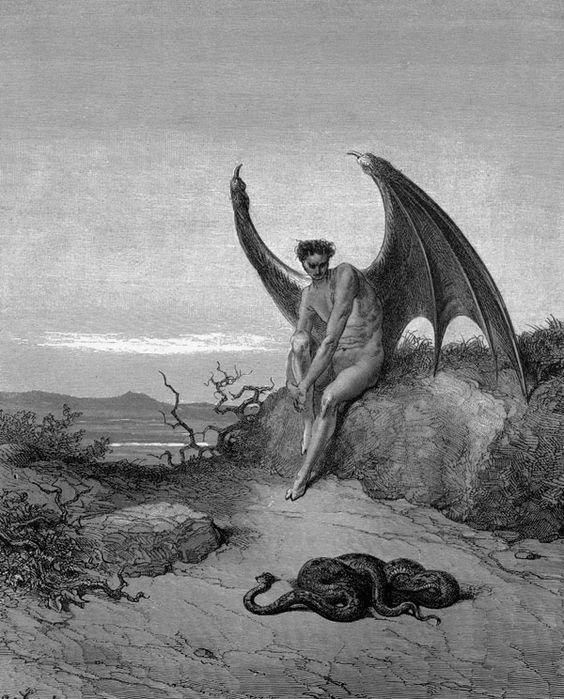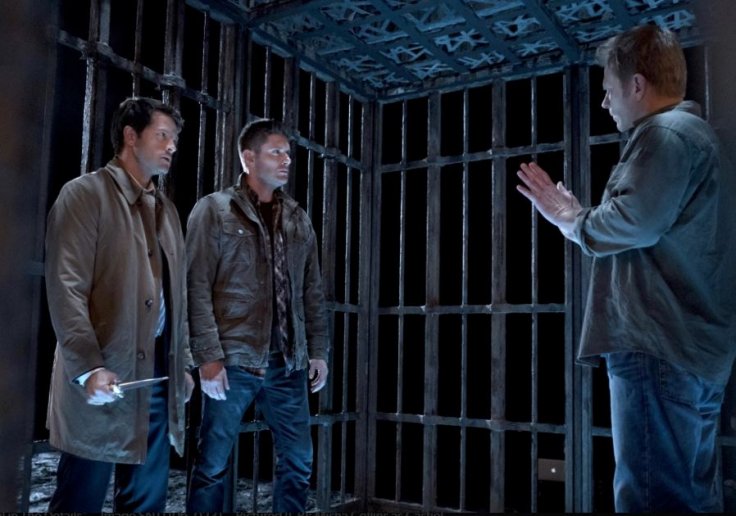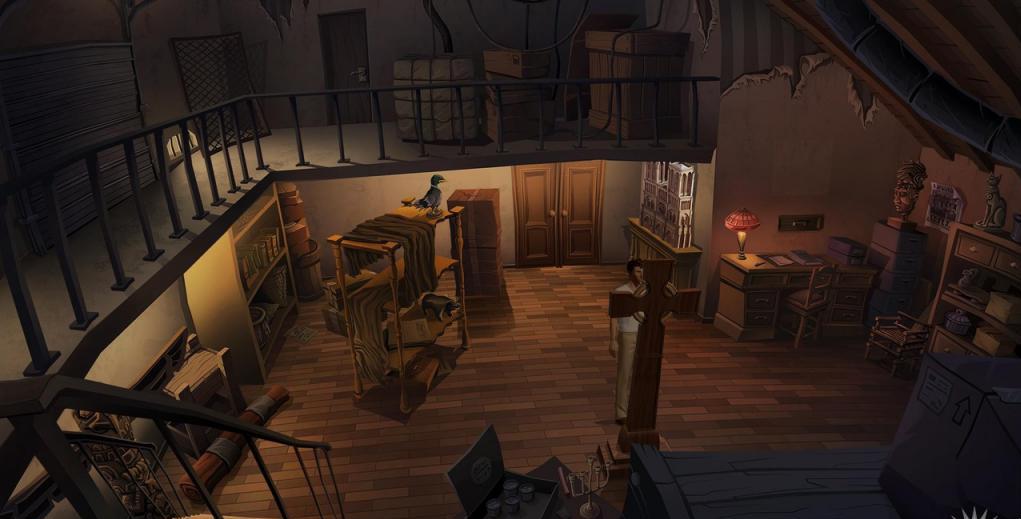In popular culture - films, books, computer games and even urban legends - the mysterious seal of Lucifer is sometimes mentioned, the meaning of which differs from case to case. Where and when did this concept appear, what actually hides the image of Lucifer, and where in modern culture can one find references to ancient myths? You will learn about all this from the article.
Lucifer: the story of the image
The name “Lucifer” is shrouded in myths, traditions and religious fears. The original meaning - “Carrying Light” - through the veil of centuries turned out to be completely distorted. In Roman mythology, the image of Lucifer personified the morning star - Venus, visible on the horizon already at sunrise. At some point, the name of the star turned into a masculine name.

At first in the Christian religion this name did not have a negative connotation. History even mentions Saint Lucifer, a bishop from the island of Sardinia. With Lucifer - the light of the morning star - Jesus Christ and the Virgin Mary were compared. And it began to be associated with the devil after, in the book of the prophet Isaiah, the fall of Satan from heaven was compared with the fall of a star, using the word lucifer with a small letter. Subsequently, this epithet became permanent, and after some time Lucifer began to be written with a capital letter, as a direct appeal to the falling angel. The name Lucifer began to be perceived inextricably from the myth of the heavenly origin of Satan.
Lucifer in modern culture
The image of Lucifer is ambiguous. If Satan or the devil is the embodiment of one hundred percent evil, then Lucifer’s name contains memories of the backstory that led to the fall. After all, the reason for exile was the desire to learn, the desire for absolute freedom, which eventually grew into pride and non-recognition of authorities. In this vein, the legend of Lucifer often provokes sympathy among rebellious adolescents, forming in them a peculiar idea of the permissible framework. In popular culture, Lucifer is mentioned in many songs, books and films, is present in the paintings.
Magic seal
Seals, or sigils, in magical practices are called signs (most often - combinations of signs) that have certain magical energies and properties. It is believed that such sigils are inherent in most famous demons and spirits. The inscription of such a sign by the magician provides help and protection of the called demon.
The seal of Lucifer is a sign composed of an inverted equilateral triangle with two more lines inscribed in it and the Latin letter V at the bottom. It is believed that the following values are encrypted here:
- masculinity in upward triangles;
- the feminine in the main triangle pointing down;
- letter V as a symbol of the initial connection with the planet Venus.
Seal of Baphomet
Although the inverted pentagram is associated with the devil, it has no direct connection with the image of Lucifer. The pentagram in a circle with the goat's muzzle inscribed in it is the seal of Baphomet, another satanic deity. For the first time, the seal of Baphomet was mentioned in 1969 as a symbol of the Church of Satan, a religious organization founded by the odious Anton Sandor LaVey. This was the first organization of its kind to officially declare worship of Satan. The main scripture of this “church” is the “Satanic Bible” of authorship of the same La Vey. He was also the supreme priest. The exact number of followers is unknown - many prefer to hide their membership in this organization.
Marks of the devil
A popular superstition is the legend of the marks of the devil, with which he marks his servants. It is believed that all the seals of Lucifer on the human body should be at least seven. It can be moles of a strange color, moles in the shape of an eye, horns, three sixes (as in the movie “Omen”).
Lucifer in the TV series Supernatural
The creators of the series “Supernatural” could not ignore the image of Lucifer. This character first appears in season four. His story is traditionally full of half tones - the angel refuses to honor the people created by the Lord and treats them with contempt, for which he is defeated. In revenge, he creates demons - and the first of them is the human woman Lilith seduced by him. Lucifer invokes an army of demons to life, but still loses. Archangel Michael, the elder brother of Lucifer, puts him in a cage and closes it with 666 seals.

But even in this strong dungeon there is a loophole: if at least 66 seals are broken, Lucifer will be able to go free again - and then the Apocalypse will come. The entire fourth season of the series is devoted to searching and breaking seals - not only the main characters are engaged in this, but also the next main antagonist - Lilith herself, who wants to free her creator. The first seal is broken by the protagonist Dean, once in the afterlife - the prediction says that she can’t stand it when the righteous shed blood in hell. The last seal is Lilith herself: as soon as she dies, the other six hundred seals of Lucifer will fall. As a result, Lilith is killed by the younger Winchester - Sam. These events end the fourth season and precede the fifth, which tells about the emerging Apocalypse.
Cain's mark as the seal of Lucifer
“Supernatural” also uses another image of the seal - Cain's mark. For the first time in the series, we see this sign at Cain, then he goes to one of the main characters - Dean Winchester. But to some extent it can also be called the seal of Lucifer, because it was the fallen angel who left this mark on Cain. If you delve into the background, it turns out that the mark is a sign that is older than Lucifer himself. It was created by the Lord Himself, enclosing the original Darkness in it, and Lucifer was chosen as the bearer and custodian of the mark. This seal significantly affected Lucifer, gradually tilting it to the dark side.
Cain became the bearer of this mark because of his desire to save his brother - the creators of the series gave the legend of Cain and Abel a new interpretation. In fact, it was Abel who was seduced by Lucifer, and Cain intended to save him. According to an agreement with Lucifer, Cain had to kill his brother with his own hands, so that his soul went to heaven, and Cain himself, before the end of time, had to be tormented by continuous thirst to kill, in order to end up in hell.
Yesterday: Seal of Lucifer
The mention of this symbol did not bypass the industry of computer games. Critics, as a subspecies of computer games, predicted, year after year, “extinction”. But new games that make you break your brain over puzzles continue to come out, and special connoisseurs of the genre are not averse to playing retroquests, as it is customary to call games that were released more than 7-8 years ago and noticeably lag behind modern graphic standards. One of these games is “Yesterday: The Seal of Lucifer,” the passage of which excites the minds since 2012.
The developer of the game is the Spanish company Pendulo, specializing in colorful quests with drawn 3D characters. In the Russian market, a brilliant adaptation of the game was performed by 1C together with Snowball studio.
The plot of the game is rather intricate. We have to manage several characters in different time periods, but the protagonists of this quest opus are a certain lost memory John Ulysses, an expert on satanic sects. By the way, the name of the protagonist is almost the only puncture of Russian adaptation. In the original character, the name is John Yesterdey (John Yesterday) - here and there is a reference to the name of the game. “And where does the seal of Lucifer then,” you ask? The fact is that the very connoisseur of Satanic sects has the same sign in his palm - in the game he was depicted as a letter in the form of a letter. Where did you get this seal on your hand and who you really are - this is what the player playing for John Ulysses has to learn.
Game features
If you expect extraordinary visual effects from the game “Yesterday: Seal of Lucifer”, then remember what year it came out. Although the characters are three-dimensional, they can not be moved across the entire space, but only along the routes “allowed” by the developers. This principle is called pseudo-three-dimensionality. Some episodes will be shown to us as a mixture of 2D and 3D.
A nice feature of the quest is that we don’t need to click every pixel with the mouse in search of useful artifacts. The panel has a special button that allows you to highlight all active objects. In addition to it, there is also a special button for hints - when you find yourself in a dead end, you can just click on it - and the game will hint what to do for further advancement. After that, this button will cease to be active for a while.

Another hallmark of the passage of the “Seal of Lucifer” is the way the hero is moved. Typically, these quests are called "walkers" or "walkers" - due to the fact that the characters in them for quite a while and dejectedly move between the main locations and objects. It happens that to complete a task you have to go along the same route several times in a row. In “Seal,” the hero literally “teleports” from one subject to another within one screen, and the player does not have to wait until his character slowly walks the distance from point A to point B.
You cannot call an impassable game - the riddles in the quest are complex enough to make the search for an answer seem interesting, but solvable. If you’re at a dead end, today there are lots of guides and other videos telling you how to get through the Lucifer Seal game.
Unique Humor Yesterday
And players will appreciate the inevitably ironic mood of the game. On the one hand, this seems to be a serious quest - with the investigation of the killings and ancient secret orders. On the other hand, the narrative is abundant in jokes and subtle irony, so in some reviews the game was even called a parody quest. There really are a lot of stamps from quests of this type: the mysterious protagonist, the sinister rituals of the Order of the Flesh, and strange murders. But cartoon character drawing slightly reduces the overall degree of pathos. In addition, the entire narrative is accompanied by the solemn voice of the author. Any interaction with the subject will be voiced in the spirit of “You raise a picture to see if there is anything behind it - and indeed, there is a wall behind it!” The narrator will make you smile more than once.
Continuation of the game
The story of John Ulysses could not remain without a continuation, although fans had to wait right up to 2016. Yesterday: Origins is both a sequel and a prequel: we learn about John’s initial adventures as well as the continuation of the story. We are also waiting for time travel, playing for various characters. But the author’s voice in Yesterday: Origins, unfortunately, is missing.